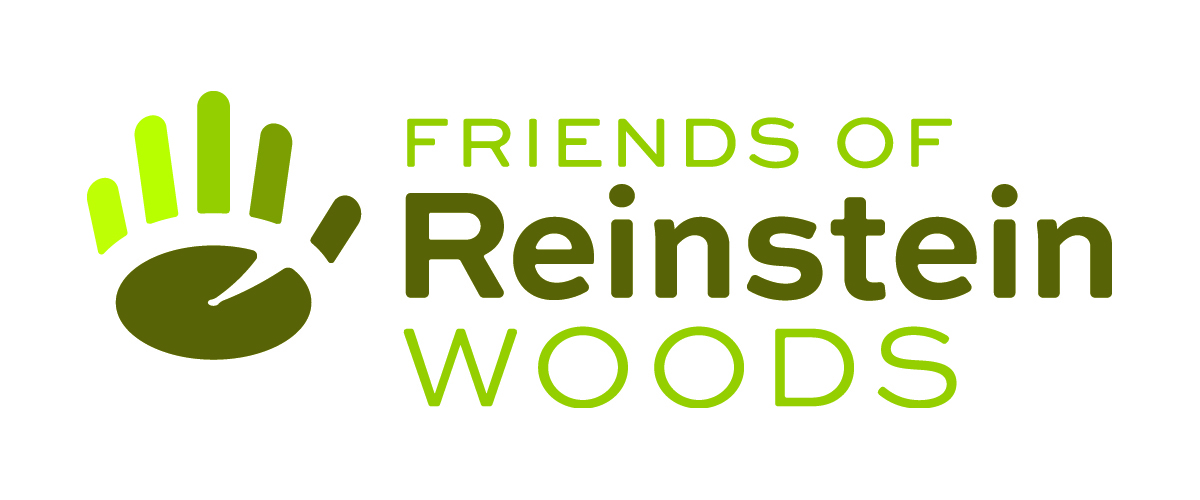News from the Friends of Reinstein
Back to all NewsWhat’s Blooming at Reinstein Woods? National EE Week
As temperatures warm and days grow longer, Reinstein Woods has begun to pop with color. Red maple flowers polka dot the trails while the long yellow catkins of cottonwoods dance in the breeze. The true stars of the parade into spring are the wildflowers that reveal their beauty for a few short weeks before the greenwash is complete.
Early wildflowers are often referred to as “spring ephemerals” due to their short blooming period. These flowers appear before the emerging forest canopy blocks the majority of the sun from reaching the forest floor. In a few weeks these flowers grow, produce seeds and disappear. Each species has developed a unique set of tools to ensure the survival of their offspring. We’ve highlighted four native wildflowers that you can find on the trail this week.
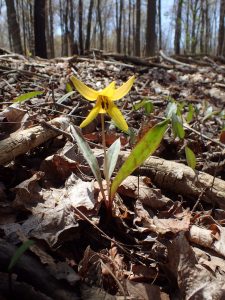
Trout Lily (Erythronium americanum)
Where to find it: Beech Tree Trail, Lower Pond Trail
Trout lilies are easily identified by two mottled leaves covered in brown splotches with a flower rising out of a single stalk. The flower has six yellow tepals- three petals and three sepals- that curve backward exposing a cluster of stamens. It takes a trout lily up to seven years to develop a flower—if it does at all—and large parts of the forest floor at Reinstein are covered in colonies of immature plants marked by their singular mottled leaf. Underground, the plant spends years adding to a bulb of stored food. If a flower grows, the resulting seeds have a fatty deposit, or elaiosome, that attract ants who disperse the seed throughout the forest. This symbiotic relationship, called myrmecochory, is common among many spring wildflowers.
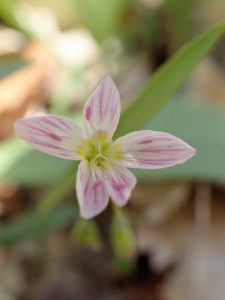
Spring Beauty (Claytonia virginica)
Where to find it: Beech Tree Trail
Hidden among a trout lily patch at Reinstein Woods is the delicate spring beauty flower. This white flower is streaked with brilliant pink and sits among grass-like leaves. These lines guide pollinators to the center of the plant. Spring ephemerals are an important source of food for many pollinating insects who find nectar and pollen scarce in the early spring.
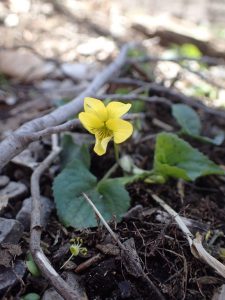
Violets (Viola)
Where to find it: Lily Pond Loop, Beech Tree Trail
Many of our trails are lined with blue and yellow violets, flowers with five delicate petals and heart shaped leaves. Like the trout lily, these plants also attract ants to their seeds with fatty elaiosomes, but ensure a wide range of travel with an exploding seed pod that shoots seeds up to ten feet away.
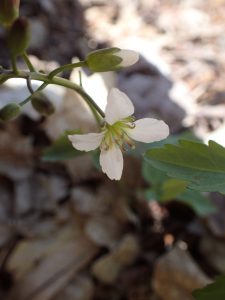
Two-leaf Toothwort (Cardamine diphylla)
Where to find it: Lower Pond Trail
This member of the mustard family can be identified by its four white petals and two opposite leaves divided into three leaflets.
See if you can spot all four of these wildflowers on your next visit to Reinstein Woods!
